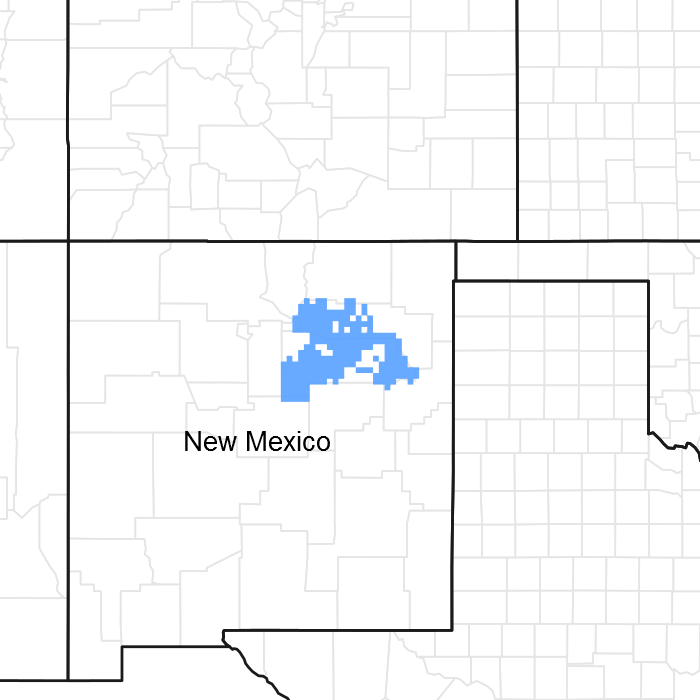Soil features
This site is correlated to a number of minor soil components (inclusions) classified broadly as Ustifluvents and Fluvaquents. As inclusions, these minor components are poorly populated in the NASIS database. These components do appear as majors in a few map units, with a description of Ustifluvents taken from the Mora County, New Mexico soil survey manuscript (as follows).
"Ustifluvents are extremely variable in their characteristics. These soils formed in mixed alluvial material. They are on flood plains along major drainageways. Slope is 0 to 2 percent. Elevation is 5,500 to 8,500 feet. The average annual precipitation is 14 to 18 inches, the average annual temperature is 44 to 52 degrees F, and the frost-free period is 90 to 160 days.
Sample pedon of Ustifluvents, frequently flooded(...):
A11--0 to 4 inches; yellowish brown (10YR 5/4) loam, dark brown (10YR 4/3) moist; moderate medium granular structure; slightly hard, very friable, slightly sticky and slightly plastic; many very fine and fine roots; many fine interstitial pores; neutral; abrupt smooth boundary.
A12--4 to 12 inches; brown (10YR 5/3) sandy loam, dark brown (10YR 4/3) moist; weak medium subangular blocky structure; slightly hard, very friable, nonsticky and nonplastic; common very fine and fine roots; many fine interstitial pores; neutral; clear smooth boundary.
AC--12 to 26 inches; brown (10YR 4/3) loam, dark brown (10YR 3/3) moist; weak medium subangular blocky structure; slightly hard, very friable, slightly sticky and slightly plastic; common very fine and fine roots; many fine interstitial pores; mildly alkaline; gradual smooth boundary.
Ab--26 to 35 inches; dark grayish brown (10YR 4/2) clay loam, very dark grayish brown (10YR 3/2) moist; moderate medium granular structure; hard, very friable, sticky and plastic; very few fine and very fine roots; many fine tubular pores; mildly alkaline; clear smooth boundary.
C--35 to 60 inches; brown (10YR 5/3) loam, dark brown (10YR 4/3) moist; massive; slightly hard, loose, slightly sticky and slightly plastic; few very fine and fine roots; many fine interstitial pores; mildly alkaline."
Brief description of the Fluvaquents NASIS component for Fluvaquents-Jaralosa-Bosquecito families complex, 0 to 3 percent slopes, flooded:
0 to 10 inches; gravelly loam; weak medium granular structure.
10 to 60 inches; stratified extremely gravelly sand/very cobbly sandy loam OR stratified extremely cobbly sand/extremely cobbly loamy sand OR stratified stratified loamy fine sand/fine sandy loam; single-grained.
This component is listed as meeting hydric criteria.
It is likely that Fluvaquents would be hydric soils on lower floodplains, and Ustifluvents would be somewhat better-drained soils on floodplain steps, and less commonly appear as hydric. Neither of these Entisols would exhibit much soil development beyond simple hydromorphic features, and some hydric soils may not present enough development to meet a hydric indicator. Since these are young, fluvial soils, texture is likely to be stratified in most profiles, and variable over lateral distances.
Based on recent observations in MLRA 70A, most floodplain soils will be generally coarse in texture (loamy sand and sandy loam) with strata of gravelly materials. Both soil components are likely to exhibit redoxomorphic features--these features appearing closer to the surface in Fluvaquents.


